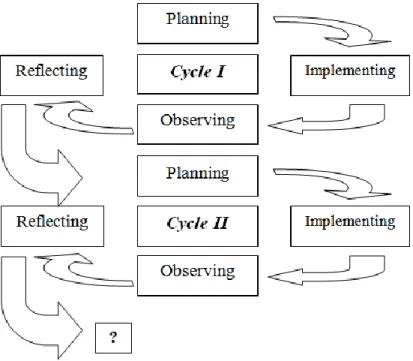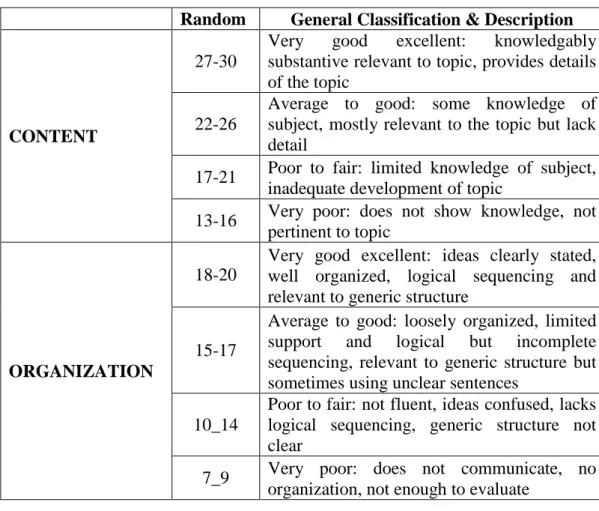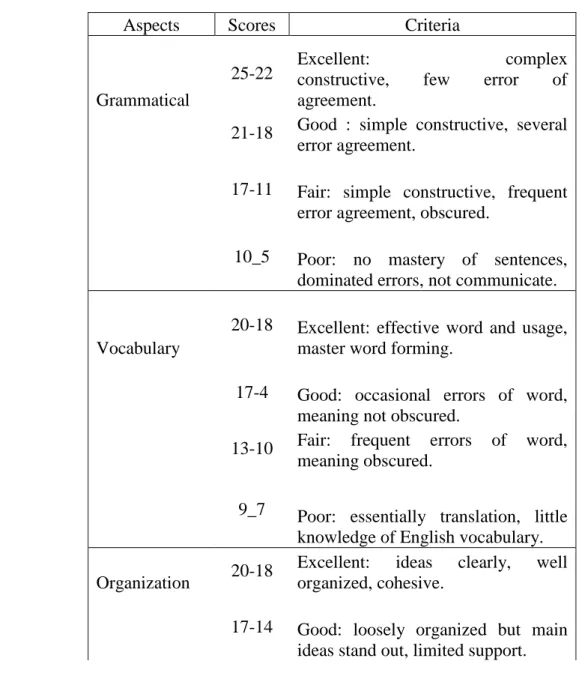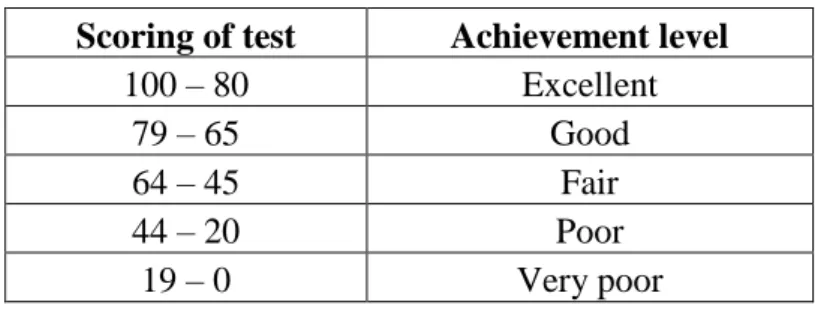Background of the Study
Therefore, wordless picture books have been used valuable as media for learning to narrate a text to explore its actual size. According to Arif and Hashim (2008:1), a wordless picture book is unique in that its content can only be communicated through picture illustrations. It conveys messages; a wordless picture book can also be enhanced to convey a message.
Lucy Cummins and Alexandra Cooper discussed the characteristics of wordless picture books: (1) The story is easily understood in sequence, (2) The story has a real beginning, middle, and end, (3) They speak of a universal experience, ( 4) Different people can interpret the same book differently, (5) The story guides the reader gently but allows the reader to create their own narrative, (6) The story has limitless appeal, (7) Excellent. The writer has found it helpful for students to make a recount paragraph using a wordless picture book.
Identification of The Problem
Wordless pictures are supposed to be effective media, which can work better in writing class.
Limitation of The Problem
They learned how to produce a short sentence, description and story sequence based on wordless picture books.
Formulation of The Problem
Benefit of the Problem A. For the tudents
As a solution to media teaching problems, it enables teachers to use wordless picture books as interesting media in teaching English in the classroom.
Prior Research
A third, earlier study was conducted by Fuji Lestari, who "improved students' writing skills in narrating a text through a wordless picture book". The research design in this study was a classroom action research (CAR) design. This research focused on students' writing skills through a wordless picture book. Based on the results of the research and discussion, it was found that the learning outcomes of students on the topic of elements of text narration can be improved with the strategy of wordless picture books in middle grade VIII. Muhammadiyah Metro.3. In addition, the differences between the previous study and this study are: (1) research location and sample, (2) dependent variable, most researchers use picture to teach reading, speaking and vocabulary, but this study focuses on writing.
2Wuwuh Eti Setiani, Using wordless (wordless) pictures to teach descriptive text writing skill, Faculty of Education, Tanjung Pura University Pontianak, Indonesia. 3 Fuji Lestari, Improving students' writing skill on recitation text through wordless picture book (A classroom action research of eight grade students of SMPN 1 Sungai Ambawang in the academic year 2017/018).
The Concept of Writing Recount Text 1. Concept of Writing
- The Concept of Writing Recount Text a. The Definition of Writing Recount Text
- Vocabulary
- Grammar
- Spelling
- Punctuation
Derewianka states that 'The purpose of a retelling is to list and describe past experiences by retelling events in the order in which they happened (chronological order)'.22 Then the writer can describe the experience or chronological order to the readers. Furthermore, according to Sudarwati and Eudia Grace “The purpose of retelling text is to tell the readers what happened in the past through a In this research, the author used wordless picture books to know students' ability to write retelling text.
The students cannot determine the truth or falsity of the story they have made based on the wordless picture book they have. Here are the next steps in teaching reading or writing narrated text using wordless picture books:35.
Action Hypothesis
Ask the group to analyze the schematic structures and find the linguistic features of retelling text. Proficiency in retelling text of the eighth grade of MTs Muhammadiyah Metro in the academic year 2018/2019 can be improved”.
RESEARCH METHOD RESEARCH METHOD
Operational Definitions of Variables
The variable that the independent variable is supposed to influence.38 In this study, the dependent variable is writing recount text. The students can express and explore their own thoughts, different feelings and also ideas through word or paper. The students are able to express their ideas, thoughts and facts in a well-formed structure.
Research Location
Subject and Object of Study
Action Plan
Planning is the first step of classroom action research, the researcher explains what, when, where and how the action will be done. In this step, the researcher should pay attention to a) the match between actions and planning, b) what action was done fluently by the students, c) what is the situation of the action, d) what enthusiasm were the students, e) as a result of all the action. As long as teaching the learning process, the researcher collaborated with the teacher to observe the research process.
If the previous result was not satisfied, the researcher and the teacher can do the next cycle. After teacher prepared them, the researcher did what they planned in the action and teacher also observed students' activity, students' enthusiasm and teacher's activity in the teaching learning process.

Data Collecting Technique
Last, the teacher made a reflection, helped the teacher to recognize the inadequacy in the teaching learning process. Geoffrey said that the pre-test focuses on assessing the level of a variable before applying the experimental intervention (or independent variable).44 The researcher uses the pre-test to know if the use of the wordless picture book strategy on writing ability. of students. In this case, the researcher gives a pre-test before the students receive explanations in recounting the writing of the text.
Based on this result, the writer will know the student's ability to write a text and know the weakness of the learning process. Post-test is performed to assess the effectiveness of the independent variable.45 The researcher uses post-test to obtain the data after analyzing and discussing the weakness and strength identified by the teacher and students during the teaching-learning process. done without explanation and give example in recount writing text in pretext, the researcher asks the students about the difficulties in answering the exercise and explains more about recounting text and applying the wordless picture book strategy to make the students more understandable to make.
Data Collecting Instrument
Average to good: adequate range, occasional errors in word/idiom choice and use, mastery of word form, appropriate register 10_13. Very good to excellent: effective complex construction, few agreement errors, tense, word order/function, article, pronoun and preposition. Very good to excellent: demonstrated mastery of convention, few spelling errors, punctuation, capitalization Section 4.
Poor to fair: frequent spelling errors, punctuation, capitalization, paragraph sentences, poor handwriting, meaning confused or obscured. Very poor: no command of conversations, dominated by spelling, punctuation, capitalization, paragraphs, handwriting, illegible or not enough to evaluate50.

Data Analysis Technique
After doing the cycle, the researcher gave test to measure understanding for students. There are some aspects analyzed in the teaching of writing, narrative text, these are: grammatical, vocabulary, content, organization and mechanics. To know students' performance in writing test, the researcher makes performance level of students' understanding.

Indicators of Success
Research Result
- Description of Research Setting
Research Finding Description N
- Result of Students Pre-Test
- Result of Students’ Cycle I
- Result of Students’ Cycle II
It was the reason why the researcher used the Wordless Picture Book to improve students' ability in narrative text writing. This first meeting took place on October 17, 2019 for 2x40 minutes, used as a pre-test for the students. After the students have finished writing the example and listening to the material, the researcher and students review and discuss the pretest of the last meeting.
In the last session, the researcher asked the students about the above material and completed it. It started with a prayer, greeting and review of the attendance list, asking the students about their status and introducing the researcher to the students. In the observation of the research, the researcher used two observations in cycle I to find information about the activity of the teacher and students in writing the narrative text.
This first meeting took place on October 21, 2019 for 2x40 minutes and was used as a pre-test for the students. Before starting the material, the researcher asked the students to remember the last material. After the students wrote the example, the researcher asked the students about the above material and concluded.
In the observation of the research, the researcher used two observations in cycle I to find information on the activity of the teacher and the students in writing the recount text. Then the researcher observed the activity of the students such as how to pay attention to the teacher's explanation, the students ask/answer the question from the teacher, the cooperation of the student with their friend and the students able to do the task. It can be concluded that most of the students pay attention to the teacher and they can accept the material more clearly.
Discussion
- The Result of Students Learning
- The Result of Students Observation Sheet
To see the students' ability to write recount texts, the researcher and the collaborator applied a post-test after finishing the treatment. The post-test cycle I scored showed that there was improvement because the researcher had given the treatment based on the lesson plan. We also wanted to see the difference between the students' pre-test and post-test results and to find out whether the treatment improved the students' writing skills.
This meant that the students could achieve the target, the target was 80% that the students gained at least 70 points. Pre-Test, Post-Test I and Post-Test II Score Pre-Test Post-Test Interval.
All students participated in class during the presentation of the material using a wordless picture book. This meant that the students could achieve the goal; the goal was for 80% of students to achieve a score of 70 or more. Therefore, there were 4 students who were not successful, but the percentage of students' success was 80%.
The SMC therefore fulfilled that 80% of the students in the class achieved a grade of at least 70. Based on the result of the post-test II, we can conclude that this research has achieved the objective which is. Based on the table, we can conclude that there was an improvement in the students' learning activities during their studies.
Conclusion
It is very important for English teacher especially English teacher in MTs Muhammadiyah Metro to improve students writing skills. The teacher should arrange certain activities that will make the students work actively and keep them from getting bored during the teaching and learning process. It is better for them to use a wordless picture book when teaching the students how to write.
It is assumed that the researcher only emphasizes the students' writing on recount text. Therefore, the other researchers can carry out the research on other genres of texts that can improve their writing skills and also enrich their knowledge in different types of factual and literary texts.
